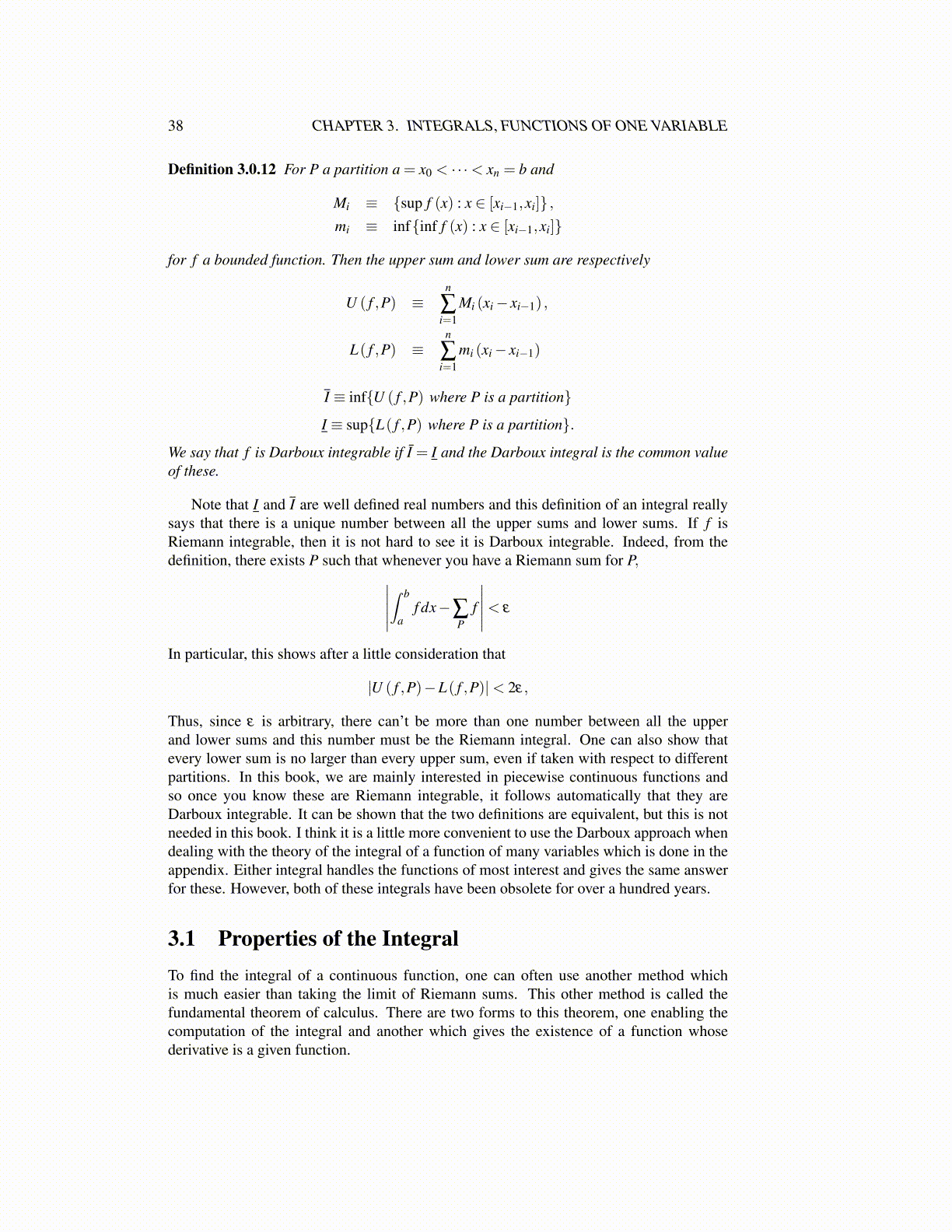
38 CHAPTER 3. INTEGRALS, FUNCTIONS OF ONE VARIABLE
Definition 3.0.12 For P a partition a = x0 < · · ·< xn = b and
Mi ≡ {sup f (x) : x ∈ [xi−1,xi]} ,mi ≡ inf{inf f (x) : x ∈ [xi−1,xi]}
for f a bounded function. Then the upper sum and lower sum are respectively
U ( f ,P) ≡n
∑i=1
Mi (xi− xi−1) ,
L( f ,P) ≡n
∑i=1
mi (xi− xi−1)
I ≡ inf{U ( f ,P) where P is a partition}
I ≡ sup{L( f ,P) where P is a partition}.
We say that f is Darboux integrable if Ī = I and the Darboux integral is the common valueof these.
Note that I and I are well defined real numbers and this definition of an integral reallysays that there is a unique number between all the upper sums and lower sums. If f isRiemann integrable, then it is not hard to see it is Darboux integrable. Indeed, from thedefinition, there exists P such that whenever you have a Riemann sum for P,∣∣∣∣∣
∫ b
af dx−∑
Pf
∣∣∣∣∣< ε
In particular, this shows after a little consideration that
|U ( f ,P)−L( f ,P)|< 2ε,
Thus, since ε is arbitrary, there can’t be more than one number between all the upperand lower sums and this number must be the Riemann integral. One can also show thatevery lower sum is no larger than every upper sum, even if taken with respect to differentpartitions. In this book, we are mainly interested in piecewise continuous functions andso once you know these are Riemann integrable, it follows automatically that they areDarboux integrable. It can be shown that the two definitions are equivalent, but this is notneeded in this book. I think it is a little more convenient to use the Darboux approach whendealing with the theory of the integral of a function of many variables which is done in theappendix. Either integral handles the functions of most interest and gives the same answerfor these. However, both of these integrals have been obsolete for over a hundred years.
3.1 Properties of the IntegralTo find the integral of a continuous function, one can often use another method whichis much easier than taking the limit of Riemann sums. This other method is called thefundamental theorem of calculus. There are two forms to this theorem, one enabling thecomputation of the integral and another which gives the existence of a function whosederivative is a given function.